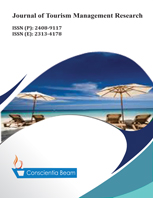Attention, imagery, and emotions: Understanding tourists’ immersive experiences in tourism performing arts through transportation theory
DOI:
https://doi.org/10.18488/31.v12i1.4169Abstract
This research examines the attention, imagery, and emotions to understand tourist’s immersive experiences in tourism performing arts through transportation theory. Immersive tourism performances have experienced tremendous growth in Mainland China and become a key attraction in many tourist destinations. Despite the prevalence of tourism performing arts (TPA), research on immersive experiences within this context is scarce. Existing literature on TPA experiences has either considered other experiential concepts or focused solely on a single facet of immersive experiences. This research seeks to theoretically and empirically investigate the elements and processes of tourists’ immersive experiences in TPA, grounded in transportation theory. This study develops a comprehensive model encompassing focused immersion, transportation, and emotional engagement, as well as their antecedents and consequences. Partially least squares structural equation modeling (PLS-SEM) was used to look at data from 329 participants and judge this model. The results reveal that immersive experience is a structured, gradual process progressing from cognitive to imagery and finally to the emotional stage: focused immersion first leads to transportation, which in turn results in emotional engagement. Additionally, the findings indicate that individuals’ immersive tendencies positively and significantly influence their immersive experiences, which subsequently acts as a powerful predictor of satisfaction. Based on these results, industry practitioners are advised to design products that are attention-seeking, imaginative, and emotionally engaging.

